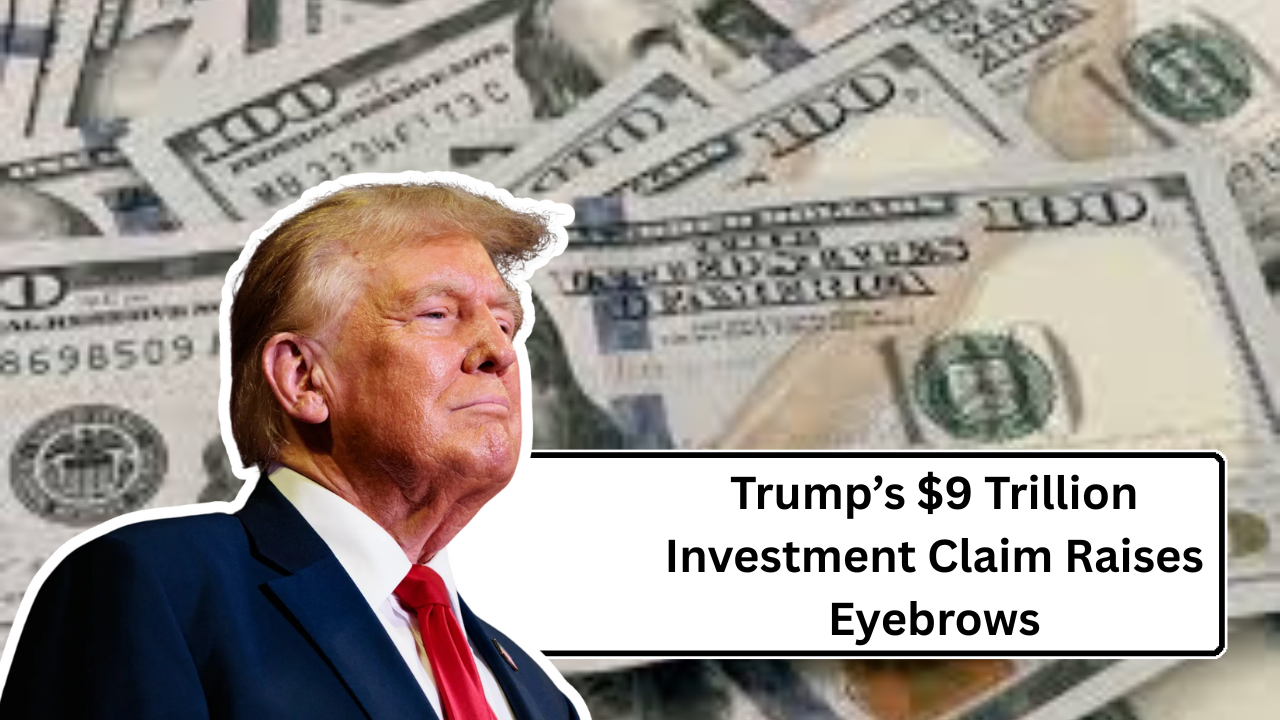In recent months, President Donald Trump has repeatedly claimed that his administration has secured $9 trillion in new investments for the United States. These assertions, made in speeches and interviews, are intended to showcase the economic success of his policies. However, a closer examination reveals that these figures are significantly inflated and not supported by concrete evidence.
The $9 Trillion Claim
President Trump has attributed this massive investment influx to his administration’s tax cuts, deregulation efforts, and trade policies. He suggests that these measures have created a favorable environment for both domestic and foreign investors, leading to unprecedented economic growth.
For instance, Trump has pointed to companies like Apple, ExxonMobil, and General Motors (GM) as examples of corporations making substantial investments in the U.S. He claimed that Apple’s $350 billion investment plan was a direct result of his tax reforms. However, while Apple did announce such a plan, the company stated that the investment was influenced by various factors—not solely the tax changes (The Washington Post).
Dissecting the Numbers
Apple’s Investment
Apple’s $350 billion plan includes spending on U.S. suppliers, capital expenditures, and a new campus. While significant, this figure is a projection over five years and not an immediate influx of capital.
ExxonMobil and GM
Trump has cited investments by ExxonMobil and GM as evidence of his policies’ success. However, GM’s announcement involved closing a plant in South Korea, with no confirmed plans to relocate operations to Detroit, as Trump suggested (The Washington Post).
Tax Cuts and Jobs Act (TCJA)
The Tax Cuts and Jobs Act, passed in 2017, was expected to stimulate business investment. Yet, studies show that the tax cuts primarily benefited shareholders through stock buybacks, rather than leading to substantial capital investments or wage growth for average workers.
Economic Implications
National Debt
Trump’s tax cuts are projected to add between $6 trillion and $7 trillion to the national debt over the next decade. According to the Congressional Budget Office (CBO), the national debt could surpass $50 trillion by 2034 (CBO).
Economic Growth
Despite claims of robust growth, the actual increase in GDP has been modest. The anticipated surge in business investments has not materialized to the extent predicted by the administration.
Job Creation and Wages
While unemployment rates have remained low, wage growth has been uneven, with significant gains concentrated among higher-income earners.
Conclusion
President Trump’s assertion of $9 trillion in new U.S. investments lacks substantiation. While some companies have announced substantial plans, attributing them solely to Trump’s policies is misleading. Broader economic indicators do not support the narrative of unprecedented growth driven by these investments.
For a detailed look at current U.S. fiscal projections, visit the Congressional Budget Office at cbo.gov.


